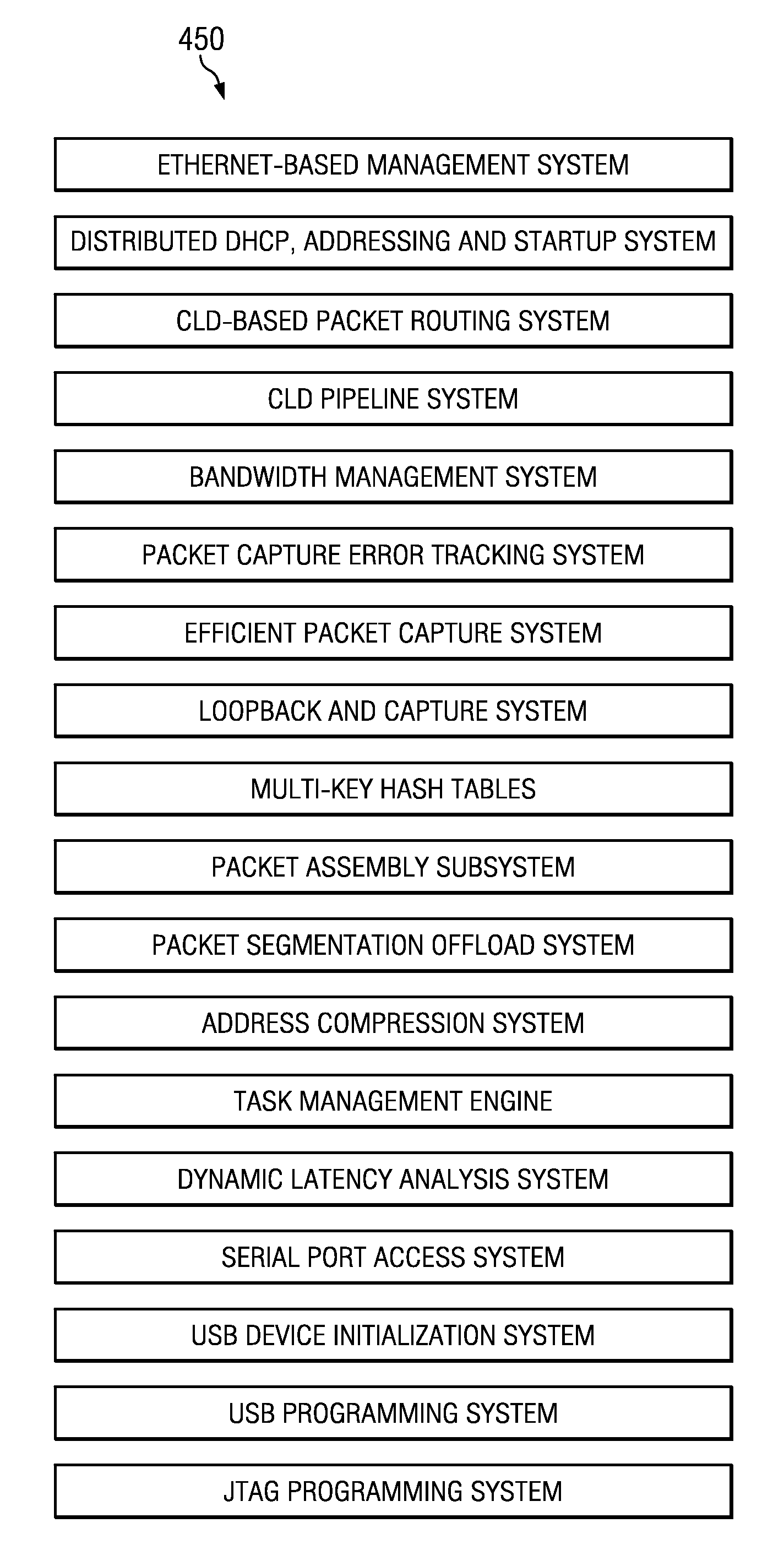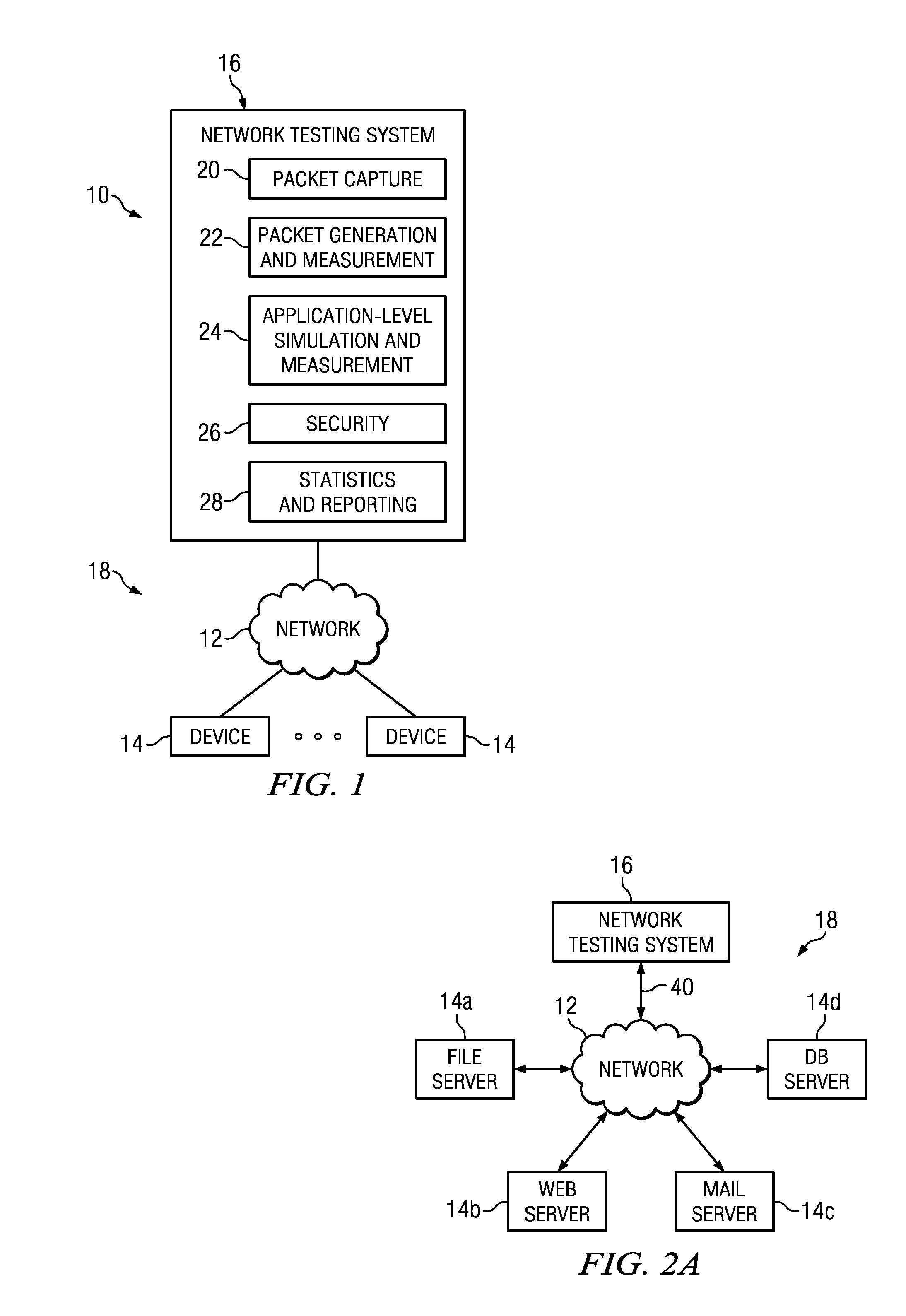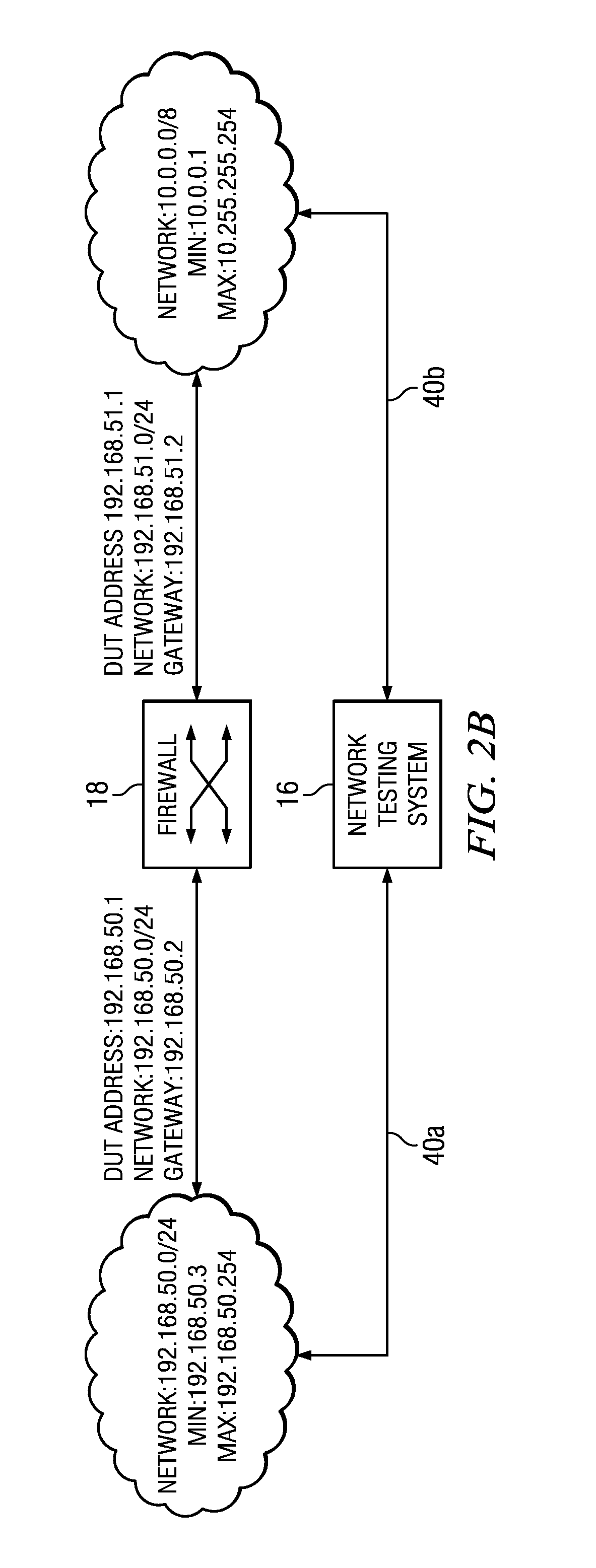Dynamic latency analysis system
a dynamic latency analysis and analysis system technology, applied in the field of systems and methods for testing communications networks, services, devices, etc., can solve the problems of increasing the workload of bandwidth-heavy applications, increasing the cost of organizations and governments, and increasing the difficulty of simply reacting to attacks and traffic evolution
- Summary
- Abstract
- Description
- Claims
- Application Information
AI Technical Summary
Benefits of technology
Problems solved by technology
Method used
Image
Examples
specific example implementation
of Architecture 100A
[0300]FIGS. 14A-14B illustrate a specific implementation of the testing and simulation architecture 100A shown in FIGS. 4 and 5, according to an example embodiment.
[0301]Controller 106 provides operational control of one or more blades in architecture 100A. Controller 106 includes control processor 134 coupled to an electrically erasable programmable read only memory (EEPROM) containing the basic input and output system (BIOS), universal serial bus (USB) interfaces 336, clock source 338, joint test action group (JTAG) controller 324, processor debug port 334, random access memory (RAM) 332, and Ethernet medium access controllers (MACs) 330A and 330B coupled to non-volatile memories 320 / 322. EEPROM memory 322 may be used to store general configuration options, e.g., the MAC address(es), link types, and other part-specific configuration options. Flash memory 320 may be used to store configurable applications such as network boot (e.g., PXE Boot).
[0302]Controller 10...
PUM
 Login to View More
Login to View More Abstract
Description
Claims
Application Information
 Login to View More
Login to View More - R&D
- Intellectual Property
- Life Sciences
- Materials
- Tech Scout
- Unparalleled Data Quality
- Higher Quality Content
- 60% Fewer Hallucinations
Browse by: Latest US Patents, China's latest patents, Technical Efficacy Thesaurus, Application Domain, Technology Topic, Popular Technical Reports.
© 2025 PatSnap. All rights reserved.Legal|Privacy policy|Modern Slavery Act Transparency Statement|Sitemap|About US| Contact US: help@patsnap.com



